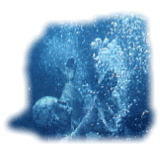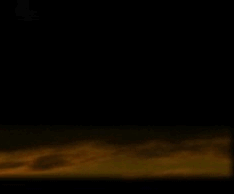|
I originally wrote this article about the turn of the century, and here re-upload it in March 2024. Free of having to deal with back working psychic intuition, the quest for empery of old is much easier.
Possibly some of the wildest assertions made for an Atlantean world culture, and therefore a prehistoric super civilization, are on behalf of the Piri Re’is Map. This map was drawn in 1513 for an “Amir al bar” (Admiral) of the Turkish Navy. This map was found when Topkapi Palace in Istanbul, the former residence of the deposed Sultans, was being converted into a museum in 1929.
Atlantology and the Ancient Astronaut Theory, the latter popularized by Erich von Däniken in his Chariots of the Gods (1968), often overlap each other. Thanks to Genesis 6:4 Atlantologists believe Earth’s first major civilization (Atlantis) could have been set into its meteoric rise by “the sons of God” co-mingling with earthlings. Von Däniken limited the map to his own theory, proposing it was the product of ancient astronauts surveying the Earth. But since he was the most articulate about what it reveals, we will defer to his account. He observed: “The maps are absolutely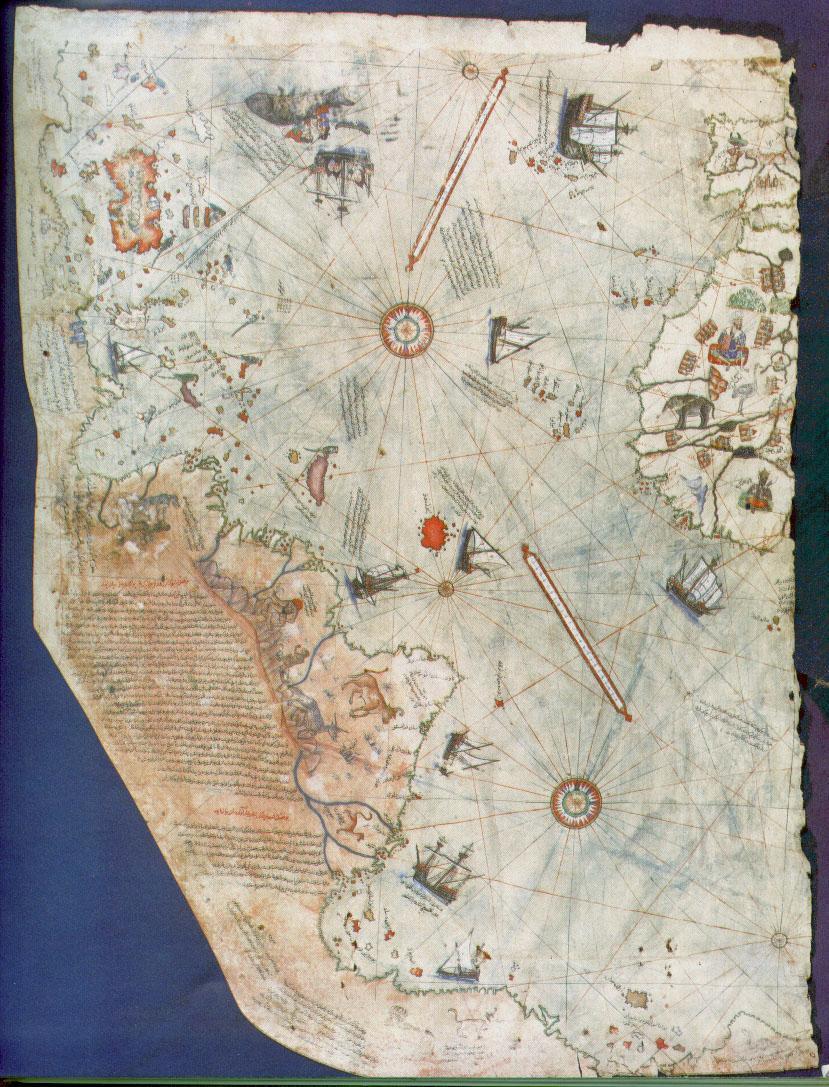 accurate . . .The coasts of North and South America and even the contours of the Antarctic were also precisely delineated on Piri Reis’ maps. The maps not only reproduced the outlines of the continents but also showed the topography of the interiors! accurate . . .The coasts of North and South America and even the contours of the Antarctic were also precisely delineated on Piri Reis’ maps. The maps not only reproduced the outlines of the continents but also showed the topography of the interiors!
“. . .The latest studies of Professor Charles H. Hapgood and mathematician Richard W. Strachan give us some more shattering information. Comparison with modern photographs of our globe taken from satellites showed that the originals of the Piri Reis maps must have been aerial photographs taken from a very great height.”
The Piri Re’is Map, prepared in 1513 for Piri Ibn Haji Mehmed of the Turkish fleet. Library of Congress. Von Däniken uses the plural “maps,” but there is only one map.
Charles Berlitz accentuated the Atlantean connection in The Bermuda Triangle (1974). “The Piri Reis Map found in Istanbul in 1929, part of a world map said to have been copied from a Greek original in the Library of Alexandria. Among other features, the Piri Reis map shows detailed features of Antarctica evidently drawn several thousand years before Antarctica was ‘discovered,’ as well as the true shape of Antarctica without the covering ice. Other features indicate an advanced knowledge of astronomy, trigonometry, and the ability to determine longitude, not known to our culture until the reign of George III of England.”
Many books and magazines have echoed such ideas. Again, as late as 1995 in his Finger Print of the Gods Graham Hancock used the Piri Re’is Map as evidence for the possibility of a prehistoric super civilization. He said: “ . . .the true enigma of this 1513 map is not so much its inclusion of a continent not discovered until 1818 [Antarctica] but its portrayal of part of the coastline of that continent under ice free conditions which came to an end 6,000 years ago and have not since recurred.”
As with the Buache Map, all of those above could extend some scientific credibility to their points of view by citing the 1965 work of Prof. Charles Hapgood, Maps of the Ancient Sea Kings, in which he postulated the map was drawn not only from Greek maps of 400 B.C., but the Greek maps from much older maps as well, preceding 4,000 B.C. in that nebulous era of “prehistory” before our history’s records begin in Sumeria and Egypt. However, the extent that alternative history has taken his work, and added thereto is incredible.

The bottom portion of the Admiral Reis Map.
In fact, the Piri Re’is Map was made in 1513, as the map itself states in Turkish. It does not show Antarctica at all. The land mass at the bottom of the map is so obviously connected to South America because it is South America. One can follow the coast line of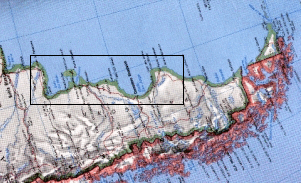 South America quite well. The cartographer merely bent it around to keep it on the same swath of paper South America quite well. The cartographer merely bent it around to keep it on the same swath of paper
Modern atlas map of the southern part of the South American continent.
Ironically von Däniken, who popularized the fantastic interpretation of the map, accepted it showed only South America (so why did he even mention Antarctica?). However, he had another explanation for why the southern part of the continent curved at the bottom of the carte. And this is where the advanced astronomy and trigonometry comes in: his belief that the curving of South America at the bottom of the paper indicates this was a copy of an ancient satellite photo taken over Cairo, from which vantage point South America would look distorted and curved. (Hapgood, however, had said that the Andes drawn on the map showed they were mapped from sea-level.) To top it off, von Däniken did, on one occasion, renounce his point of view but then retracted his retraction again.
Graham Hancock’s use of the map is the most surprising, since long before the 1990s von Däniken’s ideas, including those on the Piri Re’is Map, had been soundly countered by Dr. Clifford Wilson’s Crash Go The Chariots and Ron Story’s Space Gods Revealed. Von Däniken’s research methods themselves were scrutinized by the German magazine Der Spiegel, culminating in their stunning exposé of his third book Gold of the Gods, in which von Däniken claimed to have been taken through a maze of deeply buried metro tunnels in isolated Ecuador by distinguished local scientist Juan Moricz.
Von Däniken records: “We slid down a rope to the first platform 250 feet below the surface. From here we made 2 further descents of 250 feet. Then our visit to the age old underworld of a strange unknown race really began. The passages all formed perfect right angles. Sometimes they are narrow, sometimes wide. The walls are smooth and often seemed to be polished. The ceilings are flat and at times look as if they were covered with a kind of glaze. Obviously they did not originate from natural causes— they look more like modern air raid shelters!”
“As I was feeling and examining ceilings and walls, I burst out laughing and the sound echoed through the tunnels. Moricz shone his torch on my face:
“What’s wrong? Have you gone crazy?”
“I’d like to see the archeologist with the nerve to tell me that this was done with hand axes!”
Von Däniken went on to describe all sorts of anachronisms: unusual gold trinkets, seven chairs of what seemed to be plastic, and thousands of metal tablets which might have contained the sum total of humanity’s prehistory.
Der Spiegel traveled to Ecuador and asked. “Mr. Moricz, in his most recent book, Erich von Däniken claims to have descended with you into a secret cave  world in Ecuador.” Moricz replied: “Däniken has never been in the caves— unless it was in a flying saucer.” world in Ecuador.” Moricz replied: “Däniken has never been in the caves— unless it was in a flying saucer.”
According to Moricz, Däniken pulled the information out of him after hours of grilling him about all the local legends of the caves.
Der Spiegel’s November 1973 issue (left) sums up their findings. The German requires no English translation.
There is nothing remarkable in the Piri Re’is Map regarding ancient UFO evidence.
As regards a super civilization or Atlanteans, there is even less evidence. The contours of the Piri Re’is Map hardly show itself to be a photographic copy or even a highly skilled map drawn by Atlanteans— the whole Gulf of Mexico and Cuba are absent. There is no ice-free Antarctica on the map at all, so there is no pre 6,000 year old charting evidence on the map.
However, I’ve found that the Piri Re’is Map does show something that is quite surprising and unexpected, something that makes it relevant to the study of the Bermuda Triangle and the Cayce’s Atlantis/Bahama Bank connection. Following the coastline of South America northward one can easily distinguish the Windward and Leeward islands, Puerto Rico, then the island of Hispaniola (of which share modern Haiti and Dominican 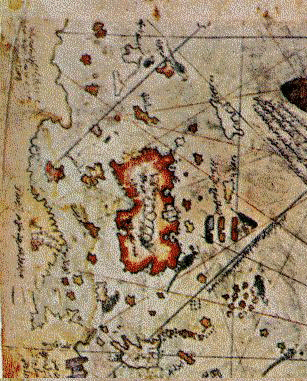 Republic). North of this there is a large island, which does not exists today. This is where the Great Bahama Bank is now submerged. Now, cartographers often marked areas on maps with something distinctive, like a type of bird, sometimes cannibals, unique animals, lamas, elephants, etc., anything to indicate a dominant feature of that region. It is fascinating that this large island is marked by a row of huge polygonal stones not unlike those off Bimini! (See the blowup, right.) Republic). North of this there is a large island, which does not exists today. This is where the Great Bahama Bank is now submerged. Now, cartographers often marked areas on maps with something distinctive, like a type of bird, sometimes cannibals, unique animals, lamas, elephants, etc., anything to indicate a dominant feature of that region. It is fascinating that this large island is marked by a row of huge polygonal stones not unlike those off Bimini! (See the blowup, right.)
This makes one wonder just how long the Bahama Banks have been underwater if during the time of Columbus the great stones could easily be seen as a salient feature of land on the Great Bahama Bank. The Bimini Road rests under only under a few fathoms of water today.
Since the Gulf Stream was used as a main conveyor back to Spain, the Spanish came across Bimini very early on. Thus these probably are the Bimini stones, meaning the shoreline of Bimini was greater than today. A slow sinking of the Bahama shelf is not impossible. About 20 feet in 500 odd years is not extraordinary. What is that? — a centimeter or so per year. Makes you wonder who just did “discover” them, J Manson Valentine or the Spaniards? Probably the latter within the first 20 years of their voyages to the New World. If so, they did not sink thousands of years ago in a sudden catastrophe. They are, in this case, some form of megalithic ruins.
The discoverer may have been Columbus himself (though not on his first voyage) or one of his early lieutenants. His map of the New World later disappeared, and has gone down in lore as the “lost map of Columbus.” The Piri Re’is Map is marked in the margin that it came (in part apparently) from a map Columbus drew himself. The earliness of the Piri Re’is Map seems probable since Cuba, the Gulf, and other more westerly areas do not appear distinctly on the map, and Columbus didn’t get that far. (On his first voyage Columbus did land on “an island” called by the locals Colba or Cuba that he was led to believe was as large as England, but he never circumnavigated it. Thus by cartography standards that is not discovering an island and as such Cuba would not be portrayed as an island on the map.)
Old records in Madrid may hold the key. Perhaps a Spanish captain made comment on the strange stones which caused them to be considered a salient feature for the map 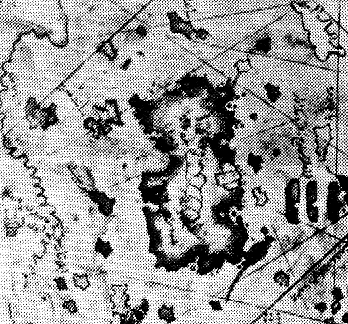 maker of this mysterious island on the Piri Re’is map. maker of this mysterious island on the Piri Re’is map.
If the Re’is Map was based on the “lost map of Columbus,” whose mysterious disappearance was never solved, than the Piri Re’is Map is the oldest surviving map of the Americas. . .and Bimini was already considered unusual.
In his Stones of Atlantis, Dr. David Zink notes that the original inhabitants of the Bahama area in Columbus’ times were very much like the Taino tribe of Haiti. In 1645 Father Breton translated much of their language. Bimini meant “Island of the old wall,” or “old ruins”— perhaps an indication that the Bimini wall was above water at the time or within recent memory. If so, its purpose has long been mysterious. Perhaps it’s someone’s Atlantis . . .but whose?
All of what its promoters have claimed or suggested is clearly wrong. There is far more evidence and inconsistencies in archeology to suggest a much more advanced prehistory than we at first imagine. But the search for this fascinating part of our species’ past is wounded by fanciful “eager believers” trying to find “holy relics” for their preconceived ideas. They either lack the scientific discipline to pursue their goal, or they outright disregard it.
|

